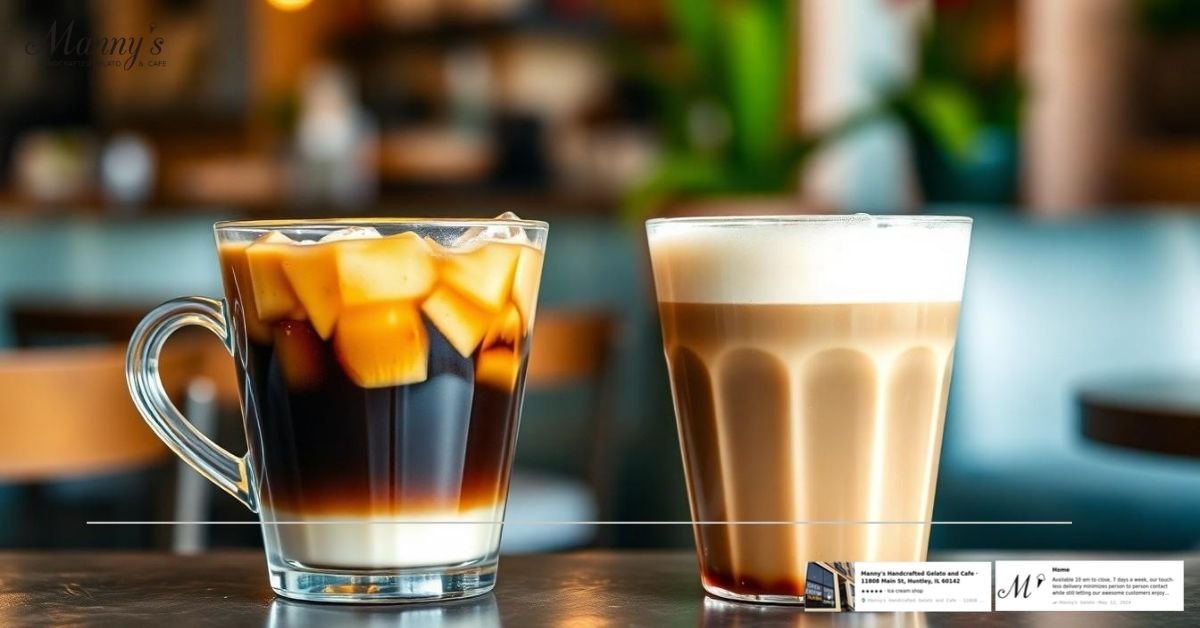- Distinct Flavor Profiles: Thai coffee is characterized by a smooth, sweet, and aromatic blend often enhanced with spices, while Vietnamese coffee boasts a strong, rich, and bold flavor primarily from robusta beans.
- Unique Brewing Techniques: Thai coffee is typically brewed quickly using simple methods, while Vietnamese coffee employs the traditional slow drip “phin” method for deeper flavor extraction.
- Cultural Significance: Both coffee styles are deeply rooted in their respective cultures, reflecting the social rituals and street food traditions prevalent in Thailand and Vietnam.
- Preparation and Serving Styles: Thai coffee can be mixed quickly and enjoyed warm or iced, whereas Vietnamese coffee is often served over ice, creating refreshing iced beverages like cà phê sữa đá.
- Popularity and Availability: Vietnamese coffee has gained international recognition and availability, while Thai coffee is still growing in popularity beyond its native country.
- Sweetness and Milk Usage: Both styles utilize sweetened condensed milk, but Thai coffee offers a range of milk options, leading to varied sweetness levels that can appeal to different taste preferences.
As coffee lovers, we often find ourselves exploring different brews from around the world. Two standout contenders that deserve our attention are Thai coffee and Vietnamese coffee. Both offer unique flavors and brewing methods that reflect their rich cultural backgrounds, making them a delightful topic for comparison.
Thai coffee, with its sweetened condensed milk and aromatic spices, provides a warm and comforting experience. On the other hand, Vietnamese coffee, known for its strong, robust flavor and iconic drip brewing, captures our taste buds in a whole different way. Join us as we dive into the fascinating world of these two beloved coffee styles and uncover what makes each one special.
Thai Coffee vs Vietnamese Coffee
When we dive into the world of Thai and Vietnamese coffee, we immediately notice some intriguing contrasts in flavor profiles and brewing techniques that define each beverage.
Flavor Profiles
Thai coffee offers a unique blend of comforting elements. Typically made with Arabica beans, it leans towards a smooth and mild flavor. The addition of sweetened condensed milk creates a rich sweetness that makes it very palatable. Often, we’ll find spices like cardamom or cinnamon incorporated into Thai coffee, adding an aromatic and warm quality that enhances the drinking experience.
On the other hand, Vietnamese coffee is a bold statement on flavor. Using Robusta beans, it delivers a strong and somewhat bitter punch. The traditional preparation method involves a slow drip process called “phin,” which extracts maximum flavor from the coffee grounds. The result is a concentrated brew that’s often sweetened with condensed milk, but with less spice compared to Thai coffee. This fusion of strength and sweetness creates a distinctive taste that many coffee enthusiasts cherish.
Brewing Methods
The brewing methods of both coffee styles also reflect cultural practices. In Thailand, coffee is often brewed quickly, with ingredients mixed directly into the cup. This straightforward approach makes it accessible for home preparation. Baristas frequently showcase creativity in their recipes, incorporating various herbs and spices.
Conversely, the Vietnamese drip method is a more leisurely experience. The phin coffee filter allows the water to slowly seep through the coffee grounds, creating a rich and robust flavor over time. This process can take several minutes, encouraging us to enjoy a moment of calm while waiting for our coffee to brew.
Popularity and Accessibility
In terms of popularity, Vietnamese coffee has garnered a significant following worldwide, mainly due to its unique preparation and flavor. It stands out in coffee shops globally, often labeled as “Vietnamese iced coffee” or “cà phê sữa đá.” The increasing interest in specialty coffee has made it more accessible to those looking to explore diverse brews.
Thai coffee, while beloved in its home country and among certain specialty shops, has not yet reached the same level of international recognition. However, as people become more aware of different coffee cultures, its warm and comforting flavors are gaining a foothold in cafes and homes alike.
Final Thoughts
In our exploration, it’s clear that both Thai and Vietnamese coffees bring something special to the table. Whether we are in the mood for the sweet and spiced warmth of Thai coffee or the strong and sweet essence of Vietnamese coffee, each offers a unique taste experience shaped by its rich cultural background.
Overview of Thai Coffee
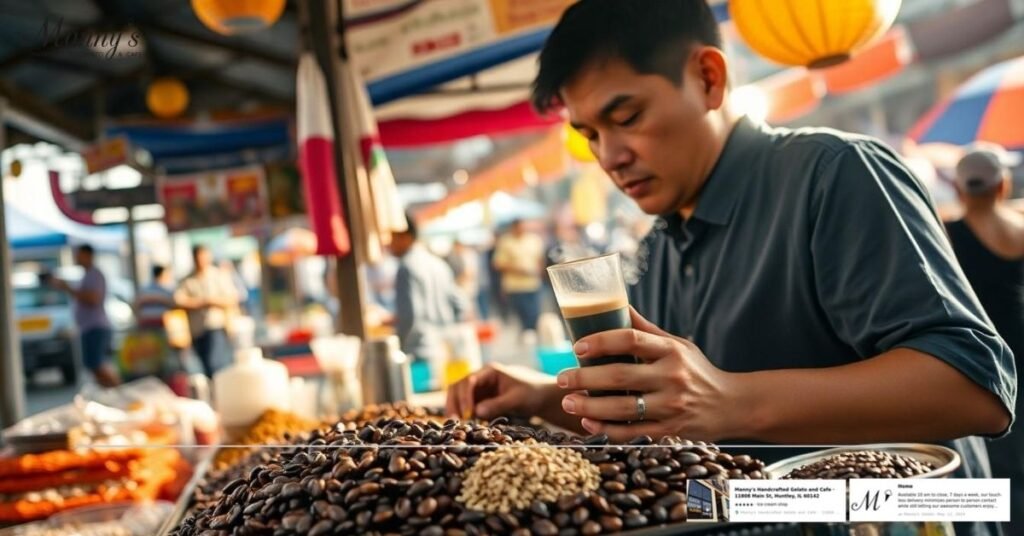
Thai coffee offers a delightful blend of flavors and history, making it a warm and comforting drink. It’s a unique reflection of Thailand’s rich culinary landscape.
Origin and History
Thai coffee, known locally as “oliang,” has its roots deeply embedded in the nation’s vibrant street food culture. It emerged from the introduction of coffee to Thailand, influenced by different regions and cultures. We find that the infusion of local spices and ingredients into this beverage highlights the diverse palate of the country. Historically, the popularity of coffee in Thailand has grown alongside its global rise, with street vendors and coffee shops offering this accessible delight to locals and visitors alike.
Flavor Profile
The flavor profile of Thai coffee is one of its most appealing traits. Typically, it combines both robusta and arabica beans, which results in a balanced brew. The addition of spices such as cardamom, sesame seeds, and occasionally cinnamon or star anise creates a unique concoction. We notice that this results in a slightly bitter yet aromatic taste, providing a comforting experience that is less intense than Vietnamese coffee, yet still robust and flavorful. This harmonious blend caters to those who enjoy a smooth and sweet coffee, often inviting them to explore more about the cultural significance behind its taste.
Brewing Methods
When it comes to brewing methods, Thai coffee stands out for its creativity and speed. We often see street vendors using simple yet effective techniques that allow for quick preparation, making it a convenient option for on-the-go coffee lovers. This contrasts with the more leisurely brewing method of Vietnamese coffee, which involves a traditional drip system called “phin” that encourages a slower extraction process. The quick and inventive brewing method of Thai coffee reflects the dynamic lifestyle often found in Thailand, making it a popular choice for those who appreciate coffee’s rich flavors without the wait.
Overview of Vietnamese Coffee

Vietnamese coffee is an integral part of our coffee culture, bringing bold flavors and a unique brewing experience to the table. Understanding its origin, flavor profile, and brewing methods helps us appreciate this delightful beverage even more.
Origin and History
Vietnamese coffee first made its appearance in 1857 through French missionaries who introduced coffee cultivation to the region. By 1888, the first plantations were established in the Ninh Bình and Quảng Bình provinces of Tonkin. The coffee industry flourished, especially in the Central Highlands, where the climate and soil conditions favored the Robusta bean. This bean has since become the dominant variety in Vietnam, accounting for about 95% of the country’s coffee production. The Vietnam War posed challenges to production; however, following the Đổi mới economic reforms in 1986, the industry saw a remarkable resurgence, allowing private enterprises to thrive and significantly boosting production volumes.
Flavor Profile
The flavor profile of Vietnamese coffee is characterized by its boldness and strength, a direct result of the predominant use of Robusta beans. These beans are known for their high caffeine content, which imparts a robust and sometimes bitter taste. When we enjoy Vietnamese coffee, we often find it unapologetically rich, making it a favorite among those who appreciate a strong coffee experience. Sweetened condensed milk is frequently added, creating a delightful contrast to the coffee’s inherent bitterness, resulting in a smooth and satisfying beverage that energizes our day.
Brewing Methods
Vietnamese coffee is traditionally brewed using a small metal drip filter known as a “phin.” This method allows for a slow and deliberate brewing process, extracting a concentrated coffee that captures the beans’ bold flavors. We pour hot water over the grounds in the phin and let it drip through the filter, which typically takes several minutes. This leisurely brewing process reflects the cultural value of savoring the moment, allowing us to enjoy the anticipation as the aroma fills the air. It’s worth noting that unlike Thai coffee, which is brewed quickly with spices and flavors, Vietnamese coffee encourages a more relaxed and meditative experience, allowing us to appreciate every sip.
Similarities Between Thai and Vietnamese Coffee
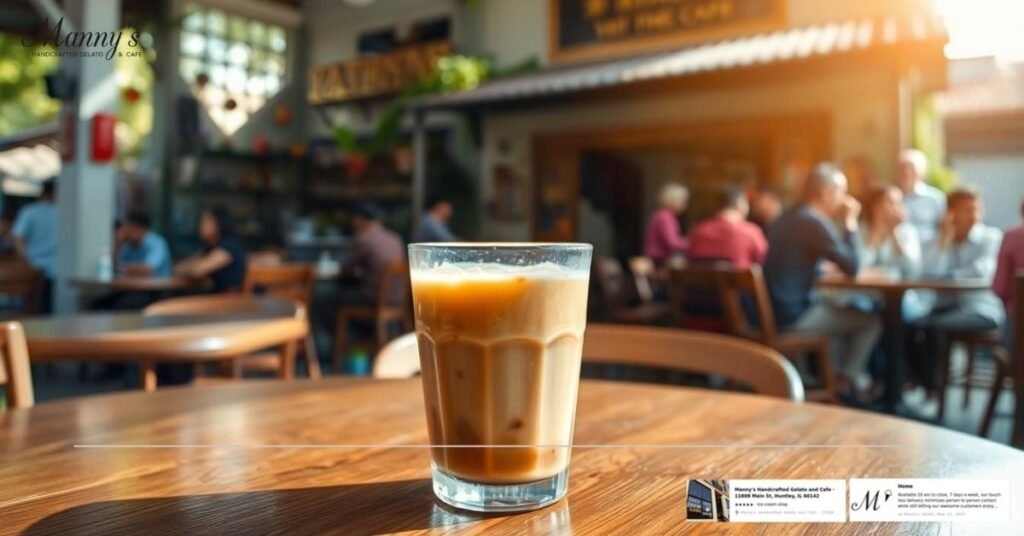
When we dive into the world of Thai and Vietnamese coffee, we find several notable similarities that bring these two unique styles together, despite their distinct flavors and preparation methods.
Use of Milk
One of the common threads is the use of milk. In both Thai and Vietnamese coffees, milk plays a key role in creating a rich and creamy texture. Vietnamese coffee typically features sweetened condensed milk, which ensures a delicious balance between the robust coffee flavor and sweetness. On the other hand, Thai coffee might also use sweetened condensed milk, but it can vary with options like evaporated milk, regular milk, or even coconut milk. This flexibility in milk choices gives both drinks a delightful creaminess that appeals to various taste preferences.
Serving Style
Another striking similarity is how these coffees are served, most notably over ice. Vietnamese iced coffee, known as cà phê sữa đá, and Thai iced coffee, referred to as oliang, both thrive in the hot, humid climates of their respective countries. Serving these drinks iced not only enhances refreshment but also makes them a perfect choice for enjoying in warm weather. This method of preparation adds to the cultural significance of coffee as a beloved drink in both Thailand and Vietnam.
Cultural Significance
Finally, coffee holds a deep cultural significance in both Thailand and Vietnam. Each country has embraced coffee as part of their social fabric, with people gathering in cafes or on street corners to enjoy a cup. The rituals surrounding coffee consumption in both cultures reflect a love for connection, conversation, and relaxation, highlighting how food and drink can bring people together.
By recognizing these similarities, we appreciate the shared cultural traditions and preferences that make Thai and Vietnamese coffee so special, enriching our understanding of these distinct yet related beverages.
Differences Between Thai and Vietnamese Coffee
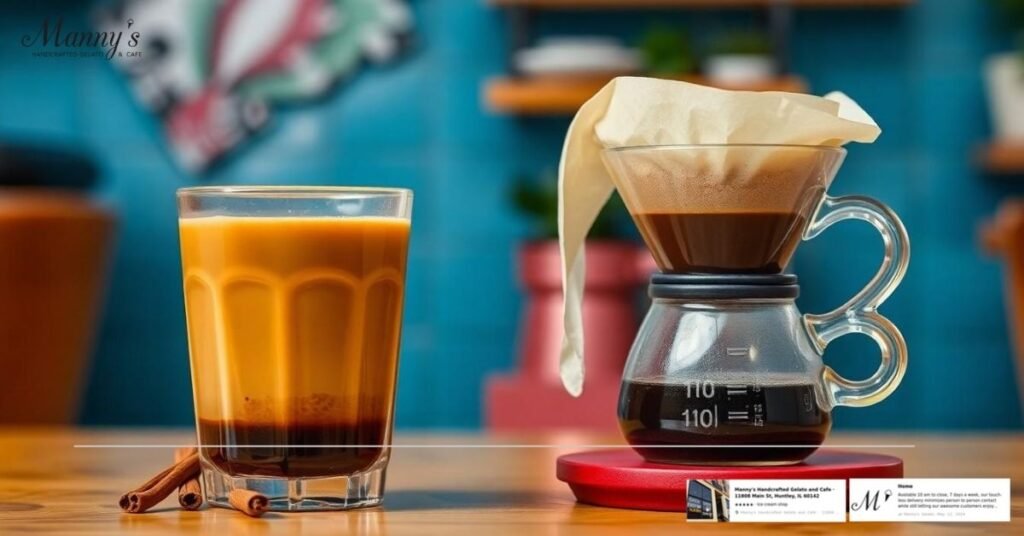
When diving deeper into the world of Thai and Vietnamese coffee, we find captivating differences that set them apart, particularly in their ingredients, additives, and preparation methods. Let’s explore these unique aspects of each coffee style.
Ingredients and Additives
Thai coffee showcases a delightful blend of robusta and arabica beans. This combination brings forth a bold flavor from the robusta, while the arabica enriches it with a smoother, aromatic taste. But what truly sets Thai coffee apart is the inclusion of spices like cardamom, star anise, sesame seeds, and sometimes a hint of cinnamon. These spices elevate the coffee’s flavor profile and create an aromatic experience that’s hard to forget.
In terms of sweetness, Thai coffee often uses sweetened condensed milk, regular fresh milk, or even coconut milk. These creamy additions perfectly complement the spices and beans, resulting in a soothing and slightly sweet cup of coffee that appeals to those with a penchant for an enriched beverage.
On the flip side, Vietnamese coffee takes a more straightforward approach. It primarily relies on robusta beans, praised for their strong and slightly bitter flavor. With a higher caffeine content, this coffee offers a jolt that many coffee lovers seek. In Vietnam, it’s common to see sweetened condensed milk lavishly poured into the brew, which helps to counterbalance the bitterness and introduces a rich, creamy texture. This straightforward approach retains a distinct personality and showcases the robustness of the coffee beans.
Preparation Techniques
The preparation methods of these two coffee styles represent their cultural uniqueness. Thai coffee, known as “oliang,” often involves a quick and efficient brewing process, which reflects the fast-paced environment of street vendors. After blending the coffee with spices, it’s steeped in hot water and then filtered through a cloth. This method results in a warm, aromatic drink that’s perfectly suited for quick enjoyment while on the go.
Conversely, Vietnamese coffee is brewed using a traditional drip method called “phin.” We can appreciate how this slow brewing process differs greatly from Thai techniques. The phin allows for a gradual extraction of flavors, leading to a more concentrated brew. As the brewed coffee slowly drips over the sweetened condensed milk, it creates a delightful layering effect. This leisurely preparation offers a waiting experience that aligns with cultural values of taking time to enjoy one’s coffee, building anticipation as the espresso-like aroma fills the air.
Both Thai and Vietnamese coffee deliver unique sensory experiences. Their differences in ingredients, additives, and preparation techniques highlight the rich cultural tapestries from which they each originate.
Pros of Thai Coffee

Thai coffee offers several unique advantages that make it a standout choice for coffee enthusiasts.
Flavor Profile
One of the most appealing aspects of Thai coffee, known as “oliang”, is its flavor profile. Many of us appreciate how it presents a milder yet distinct taste, thanks to the delicate mixture of Arabica and Robusta beans along with aromatic spices such as cardamom. This combination creates a sweet and creamy experience that can be enjoyed without overwhelming bitterness. The multi-dimensional taste often provides a refreshing alternative to the more robust flavors found in Vietnamese coffee.
Brewing Method
The brewing method for Thai coffee is another pro that many of us find enticing. Utilizing a simple coffee sock drip filter known as a tungdtom filter, the process is straightforward and quick. This leads to a faster drip that yields a cup of coffee which is less bold and acidic than its Vietnamese counterpart. For those of us who enjoy a hassle-free coffee experience, this method is perfect. We can easily replicate it at home or enjoy it at various street vendors without a complex setup.
Milk and Sweetness
The inclusion of milk in Thai coffee enhances its texture. Typically sweetened with condensed milk, evaporated milk, or regular milk, it achieves a creaminess that many coffee lovers relish. Unlike Vietnamese coffee, which often relies heavily on sweetened condensed milk for a sweet kick, Thai coffee maintains a balanced sweetness. This allows us to savor the beverage without it being overpoweringly sweet, making it a great option for those who prefer a more subtle sweetness in their cup of joe.
Cultural Experience
Drinking Thai coffee also offers us a chance to engage with the rich street food culture of Thailand. It is often prepared by street vendors who take pride in their craft, making the experience not just about the coffee itself but about the cultural ambiance. Sipping on a cup while observing the hustle and bustle around us adds layers to our coffee-drinking experience, making it more enjoyable.
Thai coffee presents a flavorful, simple, and culturally rich experience that sets it apart from other coffee styles.
Pros of Vietnamese Coffee
When we dive into the advantages of Vietnamese coffee, several remarkable qualities stand out, making it a favorite for many coffee lovers.
Bold Flavor Profile
One of the most appealing aspects of Vietnamese coffee is its strong and robust flavor. The use of robusta beans offers a unique taste that is both rich and bold. Many of us appreciate the smoothness that comes from the traditional phin filter brewing method, which allows for a slow extraction that enhances the coffee’s natural oils and flavors. This method creates a drink that’s not just strong but also surprisingly enjoyable, bringing forth a delightful complexity that keeps us coming back for more.
High Caffeine Content
Vietnamese coffee has a higher caffeine content compared to Thai coffee due to the robusta beans. These beans contain almost twice as much caffeine as arabica beans, giving us that extra boost when we need it. This can be particularly beneficial during those busy mornings or when we’re tackling a long day. The enhanced brain-boosting effects can improve our focus and endurance, making it an ideal choice for those who rely on coffee for a mental edge.
Cultural Experience
Drinking Vietnamese coffee offers more than just a caffeine fix; it’s also a cultural experience. The slow brewing process encourages us to take a moment to savor our coffee and appreciate the ritual involved. This aligns with the Vietnamese values of enjoying life’s simple pleasures, allowing us to take a break and enjoy the moment as the delightful aroma fills the air.
Versatile Serving Styles
Another pro we enjoy is the versatility of Vietnamese coffee in how it can be served. It is commonly enjoyed hot or iced, making it suitable for any time of the year, especially in the warm and humid climate where it originates. Whether we prefer the invigorating sensation of iced coffee or the comforting warmth of a hot brew, Vietnamese coffee caters to all preferences.
Sweetened Deliciousness
We also can’t ignore the delightful sweetness that characterizes many servings of Vietnamese coffee, often accented by sweetened condensed milk. This indulgent addition transforms the strong coffee into a creamy and satisfying treat, appealing to those of us who enjoy a sweeter coffee experience. The blend of boldness and sweetness creates a unique harmony that defines Vietnamese coffee and distinguishes it from other styles.
The pros of Vietnamese coffee extend beyond just taste and brewing method. We love its rich flavor profile, high caffeine content, cultural experience, versatile serving options, and delicious sweetness, all of which contribute to its rising popularity around the world.
Cons of Thai Coffee

While we appreciate the smooth and mild character of Thai coffee, there are some downsides worth noting.
Flavor Profile
One significant drawback is its flavor profile. Thai coffee, often crafted from a blend of Arabica and Robusta beans, is known for being milder and smoother. For many coffee enthusiasts who cherish a stronger and bolder flavor, this may feel less exciting compared to the robust intensity of Vietnamese coffee. Those who prefer a bitter and sharp taste might find Thai coffee lacking in comparison.
Brewing Method
The brewing method also plays a crucial role in the overall coffee experience. Thai coffee is typically made using a cloth filter or a tungdtom filter. This faster drip technique can yield a different flavor profile that sometimes fails to extract the depth and richness found in the coffee grounds. Compared to the slow-drip phin method beloved in Vietnamese coffee, the quicker Thai method may lead to a less robust taste, which could disappoint those seeking a more concentrated brew.
Milk and Sweetness
Lastly, let’s talk about the sweetness factor. Thai coffee often features various milk options like condensed milk, evaporated milk, or regular milk. While this adds a creamy texture, it can result in a different sweetness level. The sweetness in Thai coffee is generally less thick and rich than the sweetened condensed milk typically used in Vietnamese coffee, which can alter the overall drinking experience. For those who enjoy that syrupy richness, this might feel like a compromise.
Cons of Vietnamese Coffee
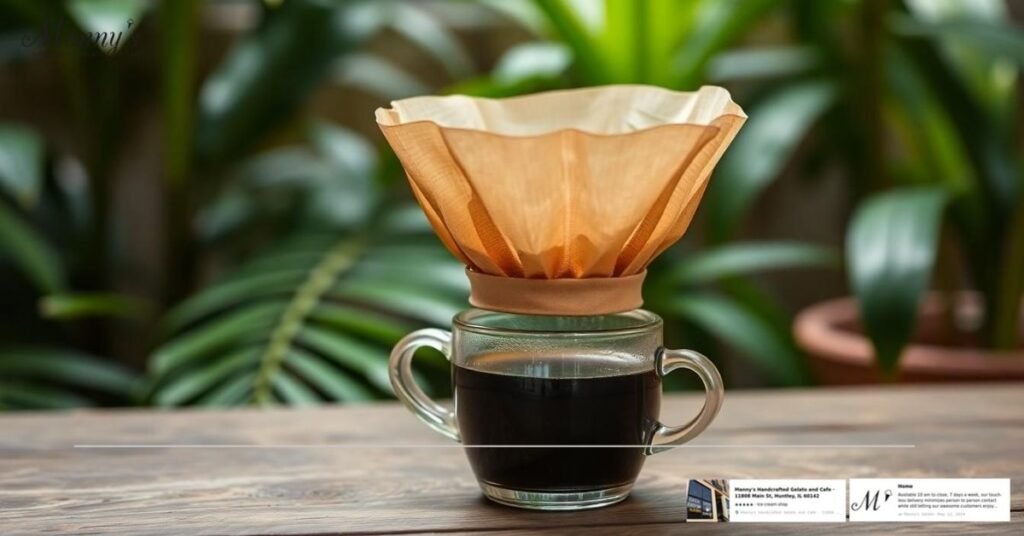
While Vietnamese coffee has its loyal following, there are some drawbacks worth considering.
Type of Coffee Beans
Vietnamese coffee predominantly uses robusta beans known for their strong and bitter flavor. This robusta dominance results in a more intense coffee experience that may not appeal to everyone. Those who prefer a milder and smoother taste might find Vietnamese coffee too strong for their liking.
Brewing Method
The traditional brewing method involves using a phin filter, which produces a concentrated coffee that some may find overwhelming. The slow drip allows for maximum extraction of flavors but can result in a cup that is too bitter or intense. If you’re accustomed to lighter and more nuanced flavors, this brewing style might be less enjoyable.
Health Considerations
One of the most striking features of Vietnamese coffee is its high caffeine content. Thanks to the robusta beans and the brewing method, it delivers more caffeine than many other coffees. While this may be a perk for some, it can lead to side effects such as hand tremors, anxiety, or insomnia when consumed in excess. For caffeine-sensitive drinkers or those with certain health conditions, this can be a significant drawback.
These cons highlight important considerations for anyone exploring the robust world of Vietnamese coffee.
Performance and User Experience
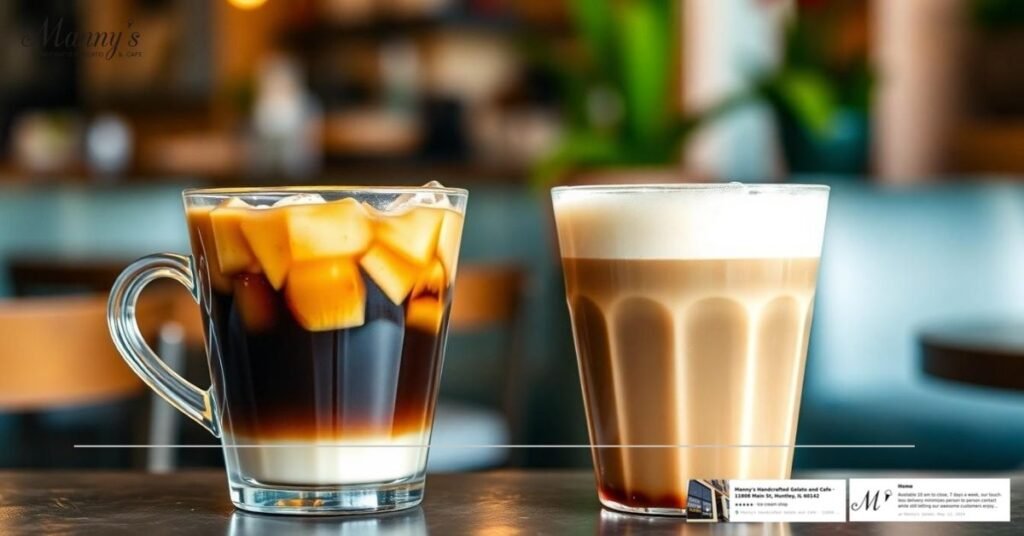
When it comes to performance and user experience, both Thai coffee and Vietnamese coffee offer unique and enjoyable encounters that cater to different taste preferences and cultural experiences.
Taste Testing
During our taste testing sessions, we found that Vietnamese coffee often hits you with its bold and strong flavor right from the first sip. Its rich, chocolatey notes are unmistakable, especially when paired with sweetened condensed milk which adds a delightful creaminess. This combination stands out especially when served over ice, making it a refreshing beverage. The concentrated brew produced by the phin filter enhances its distinct, slightly bitter quality, providing an energizing experience that many coffee lovers cherish.
On the other hand, Thai coffee surprised us with its aromatic and smooth profile. The addition of spices like cardamom and sometimes star anise offers a uniquely comforting taste that’s less intense compared to its Vietnamese counterpart. Those who appreciate a milder coffee experience will likely enjoy the harmonious blend of flavors, which can include nutty and earthy undertones from beans mixed with sesame seeds or corn. The taste is often sweet yet balanced, making it suitable for a wide range of palates, especially for those seeking something less robust.
User Preferences
User preferences play a significant role in determining which coffee style becomes a favorite. For individuals who crave a strong caffeine jolt alongside a rich flavor, Vietnamese coffee is likely the frontrunner. Its full-bodied character and high caffeine content keep many coming back for more, especially those who enjoy an intense coffee experience to kickstart their day.
Conversely, if we’re in the mood for something more fragrant and less aggressive, Thai coffee shines. It appeals to those who favor sweeter, more delicate flavors, emphasizing a comforting blend rather than sheer strength. This coffee experience often feels like a warm hug in a cup, appealing to those who enjoy savoring their drink more leisurely.
Ultimately, the preferences we observed during our tastings highlight not just personal choices but also the cultural significance behind each brewing method. Whether we’re sipping a bold cup of Vietnamese coffee or enjoying the aromatic warmth of Thai coffee, both styles provide memorable experiences steeped in their rich traditions.
Comparison with Other Coffees

When we compare Thai and Vietnamese coffee to other coffee cultures, we see a fascinating diversity in flavors and brewing methods that enrich our coffee experience.
Alternative Coffee Cultures
Exploring alternative coffee cultures reveals distinct characteristics that influence taste and preparation. For example, Ethiopian coffee is famous for its floral and fruity notes, thanks to the unique processing methods used. Their traditional coffee ceremonies create an interactive experience, focusing on the ritual of brewing. Similarly, Italian espresso, known for its rich crema and bold intensity, contrasts sharply with the smoother profiles found in Thai coffee. We also find that coffee from the coffee belt countries like Colombia and Brazil usually features a nuttier, sweeter flavor due to the climate and processing methods unique to their regions. Each culture offers a vibrant way to experience coffee and reflects local heritage, preferences, and traditions.
Market Availability
In terms of market availability, we notice some significant differences. Vietnamese coffee has garnered international recognition, particularly with popular brands like Trung Nguyên making waves in the specialty coffee market. Their convenient options allow us to savor authentic Vietnamese coffee at home, whether through ground beans or instant mixes. In contrast, Thai coffee is still on the rise globally. It might not be as widely available in mainstream coffee shops, but we can find it in specialty stores or Asian markets, often as a ready-to-drink product or packaged ground coffee. As consumers become increasingly open to unique coffee experiences, we can expect to see both Thai and Vietnamese coffee gaining traction and availability in the global market.
Conclusion
We’ve explored the delightful worlds of Thai and Vietnamese coffee and discovered how each offers a unique experience. Whether we’re savoring the aromatic spices in Thai coffee or enjoying the bold strength of Vietnamese coffee, there’s something special about both.
As we continue our coffee journeys, let’s appreciate the cultural stories behind each cup. Each style reflects its own traditions and flavors that make our coffee moments even more enjoyable. So whether we’re sipping on a comforting cup of oliang or indulging in a rich phin brew, we can celebrate the diversity and richness of these beloved beverages.
Frequently Asked Questions
What is the main difference between Thai and Vietnamese coffee?
Thai coffee tends to have a milder and aromatic flavor, made from a blend of Arabica and Robusta beans complemented with spices. In contrast, Vietnamese coffee is stronger, primarily using Robusta beans and brewed with a slow drip method, resulting in a bold and slightly bitter taste.
How is Thai coffee brewed?
Thai coffee, known as “oliang,” is typically brewed quickly using a coffee sock filter. This method allows for a smooth, less concentrated flavor profile, often sweetened with condensed milk and spices like cardamom.
What brewing method is used for Vietnamese coffee?
Vietnamese coffee is brewed using a traditional drip method called “phin.” This slow-drip technique extracts a concentrated brew, often sweetened with condensed milk, producing a strong and flavorful cup.
What are common ingredients in Thai coffee?
Thai coffee commonly combines Robusta and Arabica beans with sweetened condensed milk and spices like cardamom, sesame seeds, and occasionally cinnamon or star anise to enhance its flavor.
Why is Vietnamese coffee known for its high caffeine content?
Vietnamese coffee predominantly uses Robusta beans, which have higher caffeine levels than Arabica beans. This results in a bolder flavor and a stronger caffeine kick, appealing to those who enjoy a robust coffee experience.
Can you drink Thai and Vietnamese coffee on ice?
Yes, both Thai and Vietnamese coffee are commonly served over ice, making them refreshing choices, especially in hot and humid climates. This iced option enhances their enjoyment and cultural significance.
Are there any drawbacks to Thai coffee?
Yes, the milder flavor of Thai coffee may not satisfy those seeking a strong coffee experience. Additionally, the quicker brewing method can result in less concentrated flavors, and sweetness levels may vary, which might not appeal to all palates.
What are the pros of Vietnamese coffee?
Vietnamese coffee is celebrated for its bold flavor and high caffeine content, offering a rich coffee experience. Its unique phin brewing method also allows drinkers to savor the intricate aromas as it brews.
How does Thai coffee relate to Thailand’s culture?
Thai coffee is deeply embedded in Thailand’s street food culture. Its popularity is often enhanced by quick preparation by street vendors, making it a comforting beverage enjoyed by locals and tourists alike.

